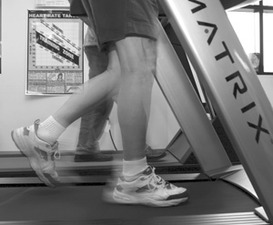Be Heart Smart in 2008
Feb 01, 2008 09:24PM ● By Don Kindred
by Colleen Dubost

Exercise is a crucial part of staying heart healthy. Get moving!February is American Heart Month, a time to raise awareness about heart disease - the leading cause of death among American men and women. With 2008 in full swing, let us remind ourselves that there are small things we can do each day, during any stage of life, to embrace our hearts, and the hearts of our loved ones.
It’s Child’s Play
During adolescent years children create habits that set the stage for their adult lives. Nutrition and exercise are two areas where caregivers and parents can encourage kids to make responsible, heart healthy choices.
When entertaining kids and teens at your house, encourage them to play outside; challenge them to a game of soccer at the park or toss the Frisbee at the beach. According to data from the Youth Media Campaign Longitudinal Study, 61.5% of children ages 9 to13 don’t participate in any organized physical activity during non-school hours. Beat this statistic by taking an active role in your child’s health – be their playmate and get your heart in shape while encouraging them to do the same.
When it comes to nutrition, “stock your kitchen with heart healthy snacks such as whole grain breads and high fiber cereals, fresh fruit and cut up vegetables.” says Monica Henry, Clinical Dietician at Saddleback Memorial Medical Center – San Clemente. “During these years we can instill healthy eating habits in our children that will last a lifetime.”
MaryAnn Martz, RN, assists a cardiac rehabilitation patient. Dinner Table Dining:
Pass on the Salt
When cooking a heart healthy meal for all ages, be aware of sodium. Excess salt can be detrimental for someone recovering from a heart ailment since excess sodium may increase the risk of high blood pressure. Overweight people who have too much salt in their diet are also at greater risk of heart disease and stroke. Need help in determining how much salt is enough? The American Heart Association recommends that people consume no more than 2.3 grams of salt per day. This translates to about one teaspoon.
Strategies for reducing sodium intake can include eating more fresh fruits and vegetables, avoiding processed foods and salty snacks and cooking with herbs and sodium-free seasonings, lemon juice, and little or no salt. Focus on preparing fresh foods for dinner and choose lean proteins like skinless chicken and turkey, fish, soy products, egg whites, and low-fat dairy with side dishes such as vegetables, green salads, beans, sweet potatoes and whole grains like brown rice. “Include a moderate amount of heart healthy omega-3 and monounsaturated fats in your diet such as olive or canola oil, fish, flaxseed, walnuts, and dark green leafy vegetables,” adds Henry.
Heart Healthy Happy Hour
Going out with friends can be a fun stress reliever, however be conscious of calorie intake and try to make heart healthy swaps when possible. One glass of red wine, which has half the calories of a margarita, helps with blood circulation and, in moderation, is good for your heart. Skip the fried calamari and reach for seared ahi instead. Love creamy artichoke dip? Try a fresh artichoke instead and get a boost of much-needed fiber along with an array of powerful antioxidants that are believed to protect against heart disease and cancer.
Monica Henry, Clinical Dietician at Saddleback Memorial - San Clemente works closely with Chef Jesus Serrano to prepare heart healthy meals for patients.Besides cocktails and calorie-rich foods, also beware of happy hour smoking. Those who smoke cigarettes on a regular basis are two to four times more likely to develop heart disease than nonsmokers are. Smokers also have about twice the stroke risk than nonsmokers. Still not convinced? Cigarette smoking takes an average of 12 years off the life of a smoker, according to the National Institute on Aging.
Recovering from Heart Ache

If you have ever suffered from a heart-related illness, always check with your doctor for the best ways to be kind to your heart. “Rehabilitation from a heart attack or bypass takes teamwork between physician, nurse, nutritionist and patient.” Says MaryAnn Martz, RN, a cardiac rehabilitation nurse at Saddleback Memorial Medical Center – San Clemente. “Start out slow and take things one step at a time. We will gradually get your heart back dancing to a new beat.” b
Saddleback Memorial Medical Center – San Clemente encourages you to Embrace Your Heart this spring. For more information on the hospital’s cardiac services, outpatient nutritional counseling or community education classes and screenings, please call the Health Information Center at 949.452.7255. May 17, the hospital will host “Dancing to a New Beat” a fundraiser for cardiac services and equipment. For tickets and more information, call 949.489.4552




